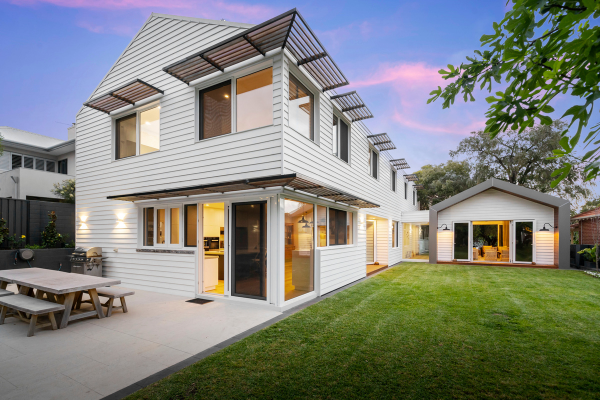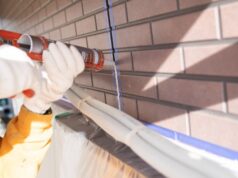
uPVC (unplasticised PVC) window frames are widely recognised for their energy efficiency, durability and minimal maintenance requirements. However, their adoption in Australia remains limited, especially when compared to markets such as Canada, the USA, Spain and neighbouring New Zealand. For business leaders, understanding the root causes of this discrepancy, and the potential for change, can inform strategic decision-making in the building materials sector.
Australia: Market overview and barriers to adoption
Australia’s window market is substantial, estimated at AUD $3 to $4 billion annually. Aluminium frames dominate, capturing over 80% of the market. uPVC, despite its superior thermal qualities and cost-effectiveness over the lifecycle, represents just 5-10% of installations.
- Legacy preferences: The building industry’s longstanding preference for aluminium stems from its wide availability, ease of fabrication and sleek, modern look. These factors have contributed to entrenched specification practices among builders and architects.
- Historical performance issues: Early uPVC imports in the 1980s performed poorly in Australia’s intense UV conditions, cementing a reputation for warping and discolouration. This legacy has proven hard to shake, despite modern uPVC formulations being specifically engineered for Australian climates.
- Regulatory landscape: The 2022 update to the National Construction Code (NCC) introduced a 7-star minimum NatHERS rating for new homes, tightening energy efficiency requirements. This regulatory change favours thermally superior window solutions, including high-quality uPVC, but market adoption remains slow.
- Supply chain challenges: Limited local extrusion capacity and a fragmented supply chain hinder market growth. Many builders remain unfamiliar with uPVC installation and are hesitant to shift from familiar aluminium systems.
Addressing misconceptions and building confidence
Recent industry initiatives, notably the uPVC Windows Alliance Industry Code of Practice (ICP), have introduced rigorous standards for uPVC composition, weather resistance, colour fastness and structural integrity. These standards, tailored to Australian conditions, provide independent accreditation and provides confidence to specifiers, builders and consumers on the durability, strength and quality of uPVC profiles in the Australian climate.
Business implications: Missed opportunities and strategic entry points
For businesses in the window manufacturing and building materials sector, the low uptake of uPVC frames in Australia signals both challenges and untapped growth potential.
- Market inertia versus market opportunity: While aluminium’s dominance is rooted in tradition and established supply chains, evolving consumer preferences and stricter energy codes are opening the door for alternatives. As homeowners become more aware of energy costs and sustainability, demand for high-performance window solutions is likely to increase.
- Education and marketing: Overcoming historical biases requires targeted education. Manufacturers and distributors must invest in campaigns to communicate the modern advantages of uPVC, such as improved thermal performance, resilience under UV exposure and long-term cost savings.
- Partnerships and local manufacturing: Expanding local extrusion capacity and fostering partnerships across the supply chain can address logistical bottlenecks. Joint ventures with established aluminium suppliers or innovative start-ups may accelerate market penetration.
- Compliance and differentiation: Emphasising compliance with the updated NCC and independent ICP accreditation can serve as key differentiators, particularly for developers targeting the growing green building segment.
New Zealand: Lessons from a parallel market
New Zealand presents a compelling case study for Australian businesses. The country shares many traits, such as a temperate climate and a similarly strong aluminium sector. Yet uPVC is gaining ground, especially in the South Island where cold winters highlight the thermal inefficiency of standard aluminium frames.
- Consumer awareness: Public understanding of window performance is more advanced in New Zealand, aided by voluntary standards such as Homestar and Passive House certification. These programs emphasise thermal performance and encourage the use of double-glazing and thermally broken frames, including uPVC.
- Normalisation in new builds: In regions where energy efficiency is a clear value proposition, such as areas prone to cold winters, uPVC has become increasingly standard in new residential projects.
- Policy and market synergy: Collaboration between government, industry bodies and advocacy groups has helped align demand with supply, smoothing the pathway for uPVC adoption and giving manufacturers confidence to invest in local capacity.
Spain: European standards, Mediterranean realities
In Spain, uPVC windows enjoy a significantly higher market share, estimates range from 35–50% particularly in residential applications. This success is largely due to alignment with broader EU directives on energy efficiency and the widespread adoption of thermal building codes following the introduction of the 2010 Energy Performance of Buildings Directive (EPBD).
Spain’s climate varies widely, from Mediterranean coasts to chilly mountain towns, but even in warmer areas, solar control and thermal insulation are key concerns. uPVC frames, often paired with low-E double glazing, offer an affordable path to meeting stringent energy benchmarks while resisting corrosion, making them suitable for both inland and coastal environments.
Government incentives, such as tax credits for energy retrofits, have further propelled uptake. Unlike in Australia, consumer perception of uPVC is positive and colour options (made possible through coextrusion and laminated foils) have overcome aesthetic resistance.
Canada: Embracing uPVC for climate and carbon
Canada presents a textbook case of how regulation and climate drive window material choices. With bitter winters across most provinces, energy efficiency isn’t a luxury, it’s a necessity. Unsurprisingly, uPVC dominates the residential window market, with some estimates placing its market share well above 60%.
The recent announcement by Profine Group to establish Kömmerling Canada underscores the strategic value of the Canadian market for high-efficiency window systems. Designed to meet Passive House and net-zero energy targets, these uPVC systems are tailored for high thermal performance and low carbon footprints.
Initiatives like Project Win-Finity, a circular recycling program for post-consumer PVC windows in the greater Toronto area, are further enhancing the appeal of uPVC windows by aligning with sustainability goals. Coextrusion techniques allow the use of recycled PVC in core profiles while maintaining virgin PVC as capstock for durability, balancing performance with lower embodied carbon.
As the Plastics News article “Window buyers look to exceed Energy Star requirements” of 21 July 2025 highlights, Canada’s consumers and regulators are united in driving the industry toward higher thermal performance and circularity.
United States: Energy Star and market evolution
In the United States, the uPVC window market is not only well-established, but also growing. uPVC frames account for the largest share of residential windows, particularly in the mid-market and new construction sectors. The reason? Energy Star.
Since its inception in the early 1990s, the US EPA’s Energy Star program has simplified complex technical decisions for consumers, creating a single, trusted benchmark for performance. As noted by Freedonia Group analyst Matt Hurley in the Plastics News piece, consumers increasingly aim to exceed Energy Star minimums, driven by branding influence, utility costs and a desire for comfort.
This behavioural shift is fuelling demand for triple glazing, low-E coatings, warm-edge spacers and uPVC profiles.
Regulatory comparisons: Where Australia falls behind
What distinguishes the US, Canada and much of Europe from Australia isn’t just climate, it’s regulation and implementation.
- USA: Energy Star provides a consistent, national benchmark. Public utilities often offer rebates for products that exceed performance minimums and state-level programs reinforce these standards.
- Canada: Nationwide codes and provincial initiatives (e.g., the BC Energy Step Code) demand high-performance building envelopes, pushing builders toward uPVC and other efficient materials.
- Spain: EU-wide energy directives harmonise expectations across member states, with uPVC playing a key role in achieving compliance.
- New Zealand: Voluntary rating schemes and the Passive House movement are changing the narrative around uPVC.
- Australia: While the NCC sets a national framework, actual enforcement and understanding of window performance, including the role of frame materials, is still lacking at the ground level.
In practice, Australia’s builders and consumers still too often equate compliance with performance, choosing the cheapest option that meets minimum standards. Without mandatory adoption of a unified rating scheme like Energy Star (e.g. WERS), consumer awareness remains low and the technical merits of uPVC remain underappreciated.
Key takeaways for Australian businesses
- Invest in consumer education: Both the public and trade professionals need updated information on the performance and durability of modern uPVC windows. Perhaps through a dedicated star-rating label, like WERS and inclusion in NatHERS tools.
- Promote independent accreditation and compliance to build trust and reduce perceived risk.
- Advocate for policy incentives like those in New Zealand, such as voluntary green building certifications that reward high-performance window installations.
- Strengthen local manufacturing and distribution networks to ensure reliable supply and support for installers.
- Circular Economy integration: Like Project Win-Finity in Canada, Rewindo in Germany or Recovinyl in the UK, take-back and recycling systems will bolster uPVC’s environmental credentials.
Conclusion: Charting a course for growth
uPVC windows are not a niche product in most developed markets, they are a standard, high-performance choice, especially in climates with heating or cooling extremes. Countries like Canada and the U.S. have demonstrated how strong regulatory frameworks, consumer education and mature supply chains can accelerate the shift to better building envelopes.
Australia, with its ambitious net-zero goals and updated NCC, has an opportunity to follow suit. But unless regulators, industry and consumers recognise the role of window frames, not just glazing, in thermal performance, uPVC will remain underutilised.
It’s time Australia caught up.





